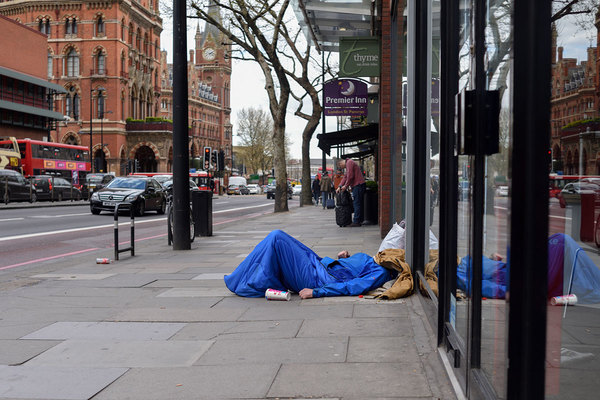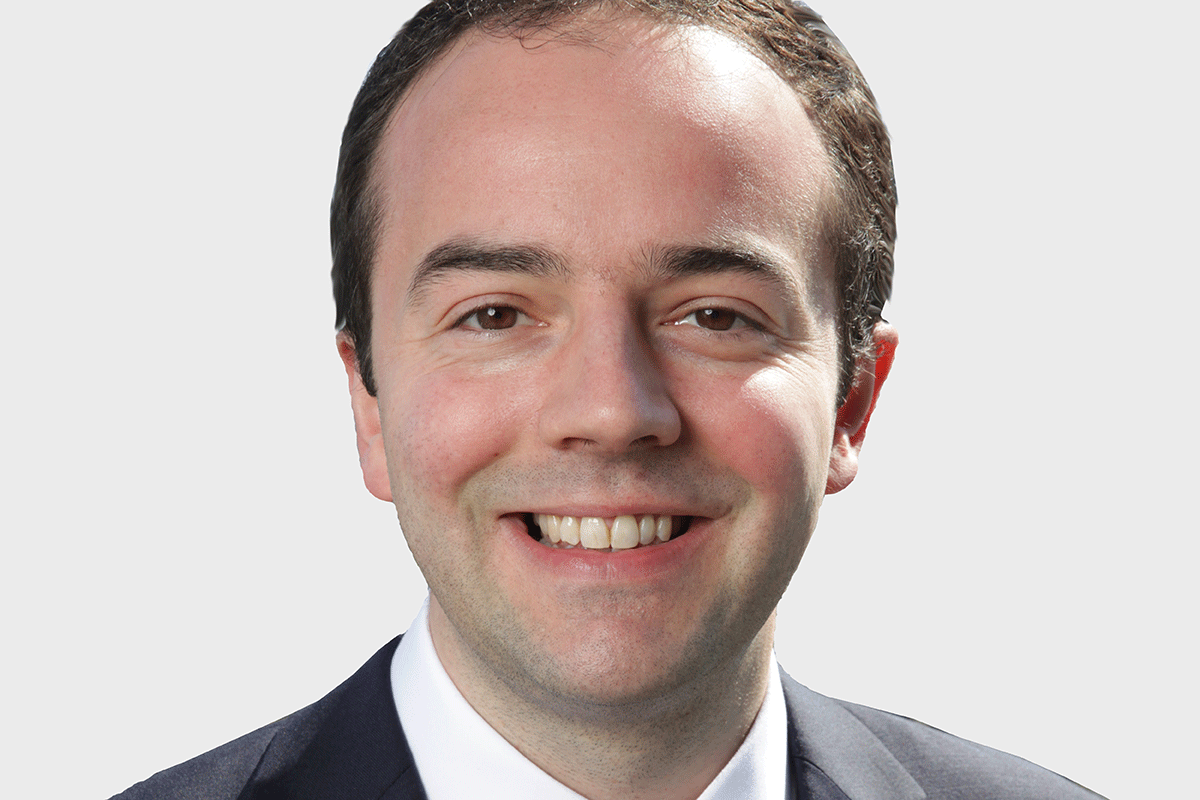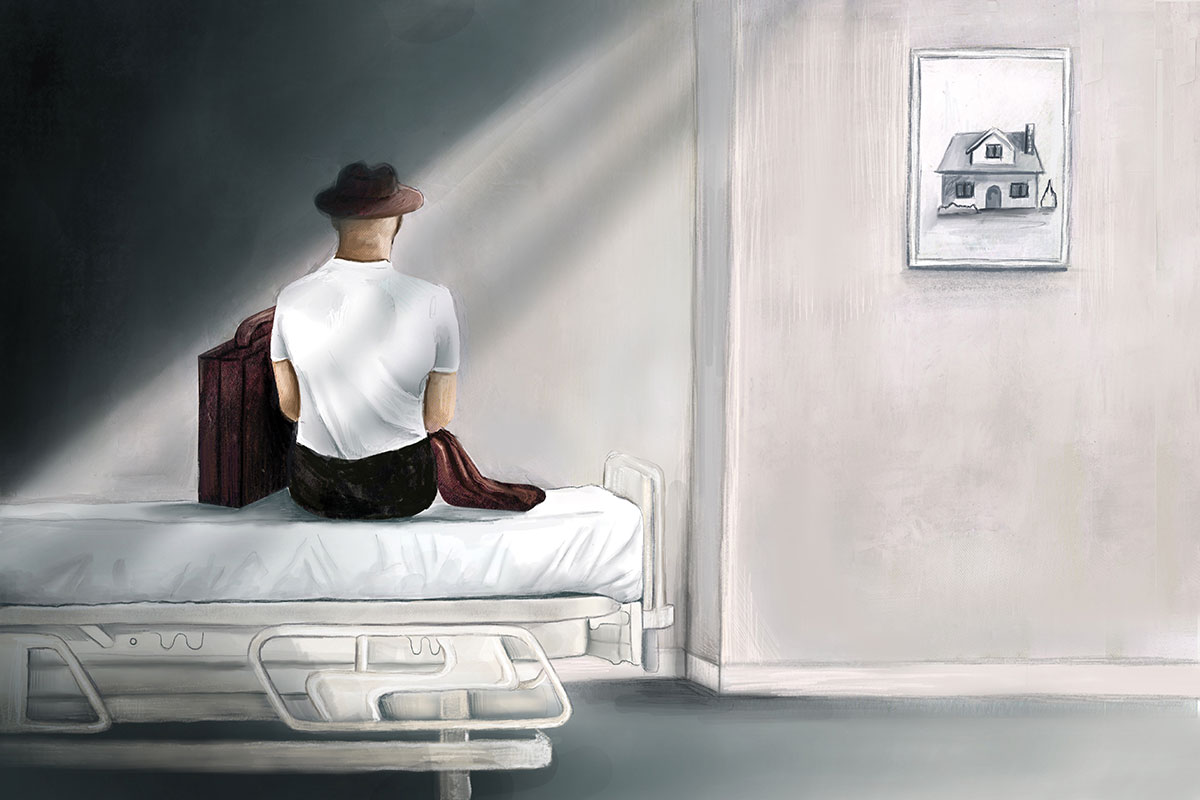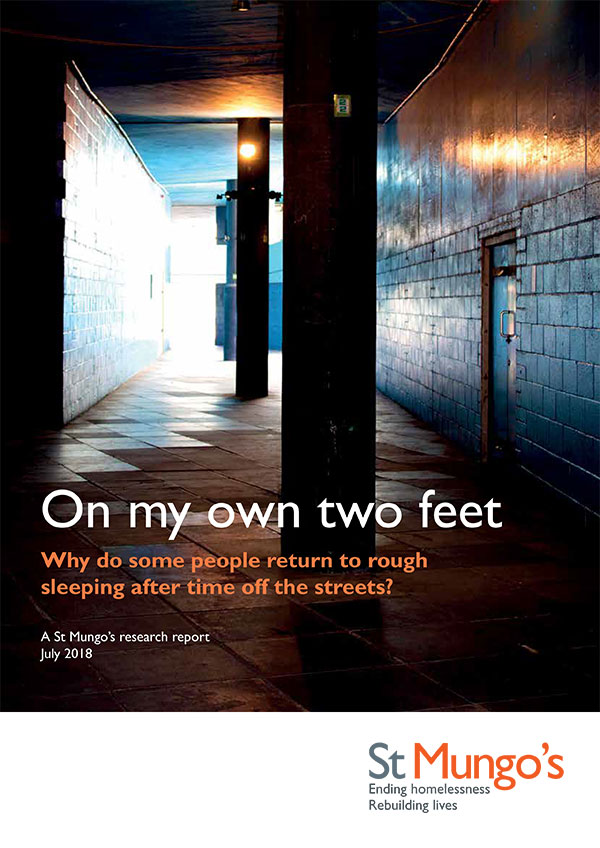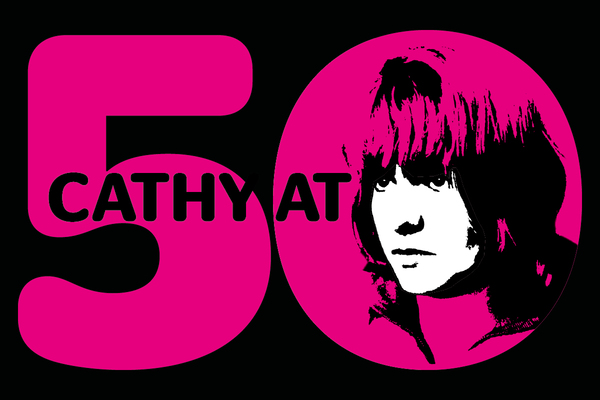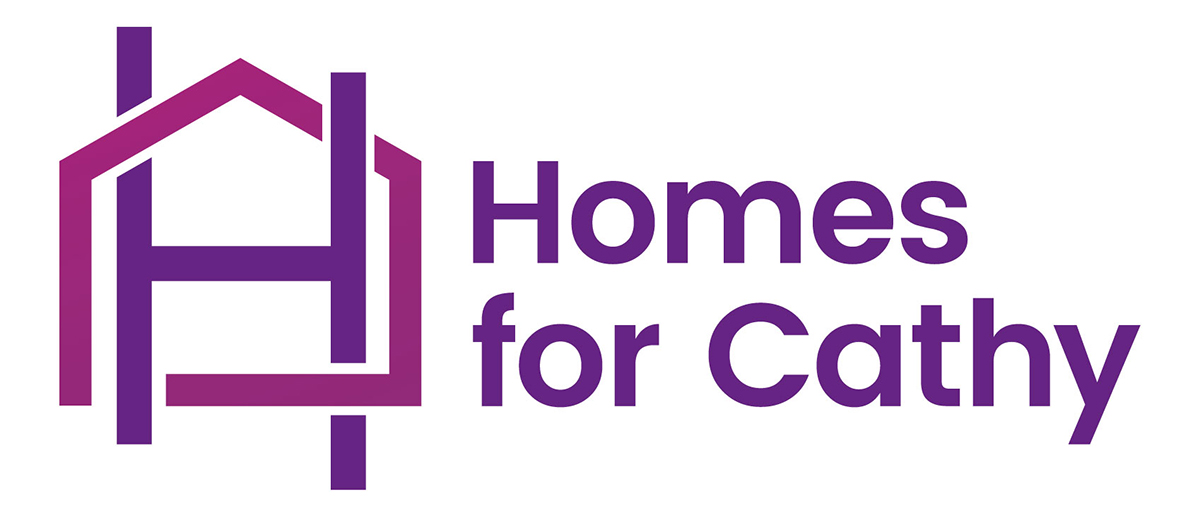You are viewing 1 of your 1 free articles
A vicious circle: the link between austerity and rough sleeping
Research by charity St Mungo’s highlights a link between austerity cuts and a spike in former rough sleepers returning to the street. Steve Sampson finds out why this raises questions for government and housing providers. Illustration by Rosanna Tasker
“Politicians think that when a homeless person is housed the problem is solved. They are wrong. That is when the problems begin,” says Daniel, a former rough sleeper who returned to the street after being evicted under a Section 8 possession order.
It was not that he did not have the money, Daniel says, but he did not understand the court process around evictions. He thought an appeal would be automatic – it wasn’t – and his local authority landlord made no effort to reach out to him, even as his eviction loomed.
A first court order was followed by a second. He had paid his rent arrears but not the court fees. The accumulating debt, alongside others, led to his eviction. Having battled to secure long-term housing for years, Daniel is acutely aware of his vulnerabilities and the difficulty he faces in managing his rent, accessing services or understanding his rights when problems arise.
“According to research from St Mungo’s, austerity cuts to support services designed to help people have led to record numbers of people becoming homeless”
“I have to remind myself every day of what I need to do. What I need is help with the functional things in running a home, clear information, someone who can break down my finances, so that things do not run out of control.”
Daniel’s case is not unique. According to research from homelessness charity St Mungo’s, austerity cuts to the support services designed to help people in his predicament have led to record numbers of people becoming homeless, and a far less well reported surge in former rough sleepers returning to the street.
The research is a retrospective analysis of floating support funding since 2009, when the ringfence on Supporting People funding was lifted.
The findings draw a stark picture. Funding for housing-related support services has been cut by more than two-thirds (69%) between 2010 and 2017, according to the National Audit Office, compared with a fall of 46% in wider housing services.
Breaking down cuts across the country, Freedom of Information Act (FOIA) requests by St Mungo’s elicited responses from 103 local authorities in England, revealing an overall cut of 18% countrywide over the past five years, from £87m to £72m.
Furthermore, it seems resources have not been allocated to reflect need. Those authorities traditionally reporting the highest levels of homelessness appear to have experienced the greatest cuts. London boroughs, for example, have faced cuts of 41% since 2013/14.
Across the eight areas with the highest number of people sleeping rough in 2017, funding shrank by 25% in the past five years.
Funding for specialist floating support services has been particularly hard hit. While generic non-specific housing support services has seen a 5% funding increase between 2013/14 and 2017/18, according to the FOIA responses, specialist services were on the end of harsh cuts: 41% for substance misuse services; 46% for mental health initiatives; and 88% for ex-offender services.
St Mungo’s research is a response to the government’s Rough Sleeping Strategy, which it published in August last year with the goal of ending street homelessness.
“Funding for specialist floating support services has been particularly hard hit”
The figures show the conundrum the government faces if it is to meet that goal, and raises questions over the role of social landlords in easing the crisis.
On one hand, the report identifies a new phenomenon: a vicious circle of homelessness in which former rough sleepers are leaving long-term housing to return to the street.
Figures from the Combined Homelessness and Information Network (CHAIN), which operates a multi-agency database of homelessness statistics in London, reveal a 27% spike in the number of rough sleepers who had spent at least a year away from the street between 2015 and 2018.
Meanwhile, on the other hand, research from the Homelessness Monitor, which considers the impacts of government policy and economic change on homelessness and is funded by Crisis and the Joseph Rowntree Foundation, found anecdotal evidence through interviews with local authority officers that social landlords have been reluctant to allocate properties to people with a history of street sleeping.
Supporting the anecdotal evidence, the group found that the number of new social housing lets to single homeless households of working age fell from 19,000 in 2007 to 13,000 in 2015. This in turn creates a bottleneck in homeless hostels, trapping some people in temporary accommodation, and leaving still more out on the streets. It is a bottleneck with which Kevin Farrell, a former St Mungo’s client-turned-service provider, is all too familiar.
Now a social impact influencer at Shine Haringey in north London, Mr Farrell says: “When I was homeless in 2008 there was consistent support. But fast forward to today, the cuts mean there is no consistency. Today, I work with clients who are in exactly the position I was in then, but they are ending up street homeless.
“You’re seeing a lot of this now. Clients are on repeat, they have been through the services before. It is like they are on a hamster wheel. They go round, get a bit of support, and then they fail, they fall – it could be mental health issues, substance abuse or trauma, and they are back out [on the street]. It’s not rocket science as to where this epidemic of people returning to the street is coming from. Floating support is not enough.
“It’s easy enough to pick someone up off the street, put them into a hostel and give them an initial support structure, and get them into a housing unit or social housing, but that is where all the support stops.”
St Mungo’s acknowledges the pressure on associations is intense. In 2017, more than 1.15 million families and individuals were vying for social housing in England but only 290,000 social homes were available, according to a report from Shelter.
Catherine Ryder, head of policy at the National Housing Federation, pushes back on any notion that the organisation’s members have become part of the problem, but concedes social landlords face tough choices.
Why do people return to sleeping rough after time away from the streets?
That was the question posed by St Mungo’s in its peer-led research – On My Own Two Feet –
published in 2018 to launch the charity’s ongoing campaign to shape the future of government funding for housing support services.
According to Robyn Casey, senior policy and public affairs officer, the contributing drivers can to be split into two distinct groups: push factors and pull factors.
Ms Casey says: “People are pushed onto the streets by all the factors you might expect: high rents, eviction, relationship breakdowns. But some people also experienced a pull to the street.”
Individually pull factors may not spark bouts of homelessness, but they can serve to weaken a tenant’s resolve to sustain a tenancy.
The research describes the power of the pull to the street as that of an addiction, such as to alcohol or drugs, luring people to return to rough sleeping despite the risks. It may be that they feel isolated away from their social networks, more at home on the street, or better equipped to survive rough sleeping.
“More than once we heard someone describe being ‘addicted’ to the streets. For some people, becoming acclimatised meant they felt more comfortable outside than in; they became used to rough sleeping, although they knew it to be harmful,” the research states.
The report also identified that vulnerable tenants often experience “holes in the safety net”, says Ms Casey, where protective measures that could help to prevent a person from returning to rough sleeping are absent.
According to the research these holes could be addressed if people were better able to access support while living independently.
“Housing associations were set up to help people in the greatest housing need,” she states. “If an assessment reveals that someone may not be able to afford their rent or access the support they need, housing associations will take a flexible approach towards helping that person live in the property.
“However, in some instances, they might have to refer them to the council to find a more suitable home. The severe shortage of social housing means housing associations sometimes face really difficult decisions when it comes to allocating homes.”
So, in a perfect world, how might social landlords ease the logjam?
One agency focused solely on placing former street sleepers into long-term homes is the Clearing House, which sits under St Mungo’s portfolio of services. It claims a 92% success rate when it comes to tenants sustaining tenancies.
“We create a bridge between supported and independent living,” says Mr Laybourn, manager at the Clearing House
Working with 50 social landlords, from smaller outfits focused on specific demographics, to larger G15 players, the London-based service benefits from a ringfenced housing stock of about 3,700 flats that
were provided by social landlords following its launch in 1991.
In addition, the initiative has guaranteed funding for two tenancy sustainment teams that were put in place under the government’s Rough Sleeping Strategy back in 1999.
The service is unique to London but manager Alex Laybourn says, with the right resources, the model could be rolled out countrywide.
“We create a bridge between supported and independent living,” says Mr Laybourn. “The Clearing House acts as a relationship manager and broker between homelessness services and social landlords, overseeing the quality of referrals and handling allocations.”
As such, Mr Laybourn says, housing associations can be confident that, with the right level of support, the candidate will be able to sustain the tenancy. Fundamental to the service’s success is that floating support can be tailored to meet changing needs should a tenant hit a bump in the road in their journey to independent living. But its success also relies on housing associations being flexible in the criteria they set for tenants around financial eligibility.
While the Clearing House has enviable resources, moves to engender collaborations between homelessness services and social landlords to tackle the bottleneck of homelessness are also underway across England.
Launched in 2016, the Homes for Cathy campaign works with more than 70 organisations and is calling on social landlords to make three clear commitments to make an effective contribution to ending homelessness, including rough sleeping.
These are to work in partnership with local authorities to provide housing options to meet the needs of all homeless people in their local communities, to operate flexible allocations policies, and to commit to meeting the needs of vulnerable tenants, both in accessing and sustaining social housing tenancies.
How floating support services fit into this model is likely to be a hot topic of debate in March when Homes for Cathy joins forces with Inside Housing and the Chartered Institute of Housing to deliver the second Homes for Cathy annual conference.
But while welcoming the support of social landlords in tackling the issues, Robyn Casey, the author of the St Mungo’s report and senior policy and public affairs officer, is keen to stress that the charity is seeking to reinstitute a “universal service” that can reach vulnerable tenants such as Daniel whether they are living in the social or private rental sectors.
And what of the government’s Rough Sleeping Strategy to date?
“We welcome the commitment to get people off the street. But the next stage is to look to the long term, and that once off the street they do not return,” she says.
Mr Farrell is now settled in a flat, and he heads up a socially inclusive community centre. But Ms Casey believes others may not have similar outcomes unless the government reviews its funding policies.
“The concern is that people will return to rough sleeping or that rough sleeping won’t decline, or that they don’t get access to social or stable housing,” she concludes.
Cathy at 50 campaign
Our Cathy at 50 campaign calls on councils to explore Housing First as a default option for long-term rough sleepers and commission Housing First schemes, housing associations to identify additional stock for Housing First schemes and government to support five Housing First projects, collect evidence and distribute best practice.
The nine Homes for Cathy commitments
The Homes for Cathy group of housing associations, working with housing charity Crisis, is asking its members to sign up to nine commitments to tackle homelessness:
They are:
- To contribute to the development and execution of local authority homelessness strategies
- To operate flexible allocations and eligibility polices which allow individual applicants’ unique sets of circumstances and housing histories to be considered
- To offer constructive solutions to applicants who aren’t deemed eligible for an offer of a home
- To not make homeless any tenant seeking to prevent their homelessness (as defined in the Crisis plan)
- To commit to meeting the needs of vulnerable tenant groups
- To work in partnership to provide a range of affordable housing options which meet the needs of all homeless people in their local communities
- To ensure that properties offered to homeless people are ready to move into
- To contribute to ending migrant homelessness in the areas housing associations operate
- To lobby, challenge and inspire others to support ending homelessness

